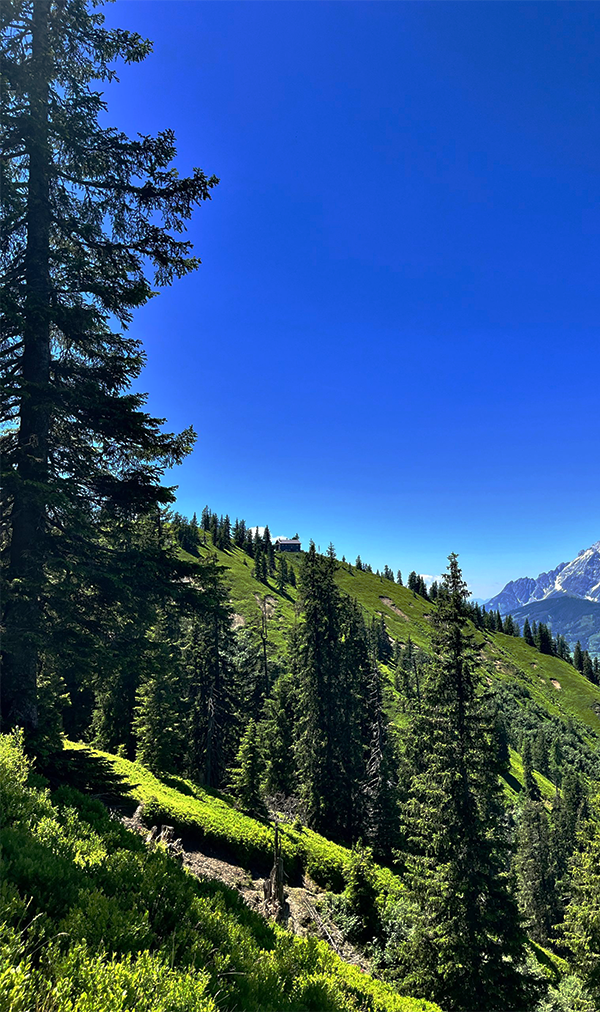Geology
Current scientific topics in geology

Geology of the Ore of the Alps UNESCO Global Geopark
The Ore of the Alps UNESCO Global Geopark is geologically located in the Northern Limestone Alps, the greywacke zone and the Tauern window (Penninic). The Northern Limestone Alps with the Hochkönig, Hagen- and Tennengebirge mountains are mainly composed of limestone and dolomites, which form rugged and brittle rock formations such as the Mandlwände (Mühlbach am Hochkönig). The softer slates and phyllites of the greywacke zone, on the other hand, form gentler peaks such as the Hochgründeck. This zone is also home to copper ore deposits, which have been characteristic for the region since prehistoric times. Further south, there are gorge limestones and limestone phyllites that form the Paarseen - Heukareck - Schuhflicker landscape conservation area.
During the Ice Age, i.e. from 2.6 million years to 11,600 years ago, the area was covered several times by glaciers, which were over 1000 metres thick, so that around 20,000 years ago, for example, the Hochgründeck was completely covered with ice. As a result, many traces of this period can be found in the Geopark, and soil formation only began after the ice has melted.
Soil
Soil is the living layer of the solid earth. Soil colonisers, such as plants, dissolve minerals from the rocky subsoil and thus accelerate its weathering. At the same time, ants, spiders, earthworms and other soil dwellers process dead plant matter such as leaves, grass and wood, which adds carbon and nitrogen from the air to the soil. The excretions and remains of these creatures produce organic matter known as humus. This is the basis for production of all soil.
The soils in the Ore of the Alps UNESCO Global Geopark are "young". It was only after the melting of the large ice-age glaciers and the return of vegetation to the formerly ice-covered ground that the first pioneer plants were able to assert themselves.
The first so-called raw soils formed in the Geopark around 16,000 years ago. Since then, they have grown to considerable thicknesses of over one metre in some cases. These brown earths can be found as well-developed, very fertile soils throughout the Geopark.
This means that it took over 10,000 years for our current brown soils to develop. Despite an annual soil loss of 1.1 tonnes per hectare for grassland and 5.8 tonnes per hectare for arable land caused by erosion (Austrian Federal Office of Water Management, 2020), the soils are roughly balanced out by new soil formation. In some regions, however, significantly more is removed than is newly formed. Soil fulfils many functions (water storage and purification, provision of food, etc.) and is therefore an essential basis for life.
Brochure "Soils in the Ore of the Alps UNESCO Global Geopark"
Discover the evolution of our planet and your home!
Here you can see the world and even your home town through millions of years! Go back 750 million years in time and discover how our planet has evolved over the course of the Earth's history. See the world as the first dinosaurs experienced it 220 million years ago or what the world looked like when an asteroid impact in Yucatan (Mexico) 66 million years ago in the late Cretaceous period led to the mass extinction of the dinosaurs, all flying reptiles and many marine animals.
